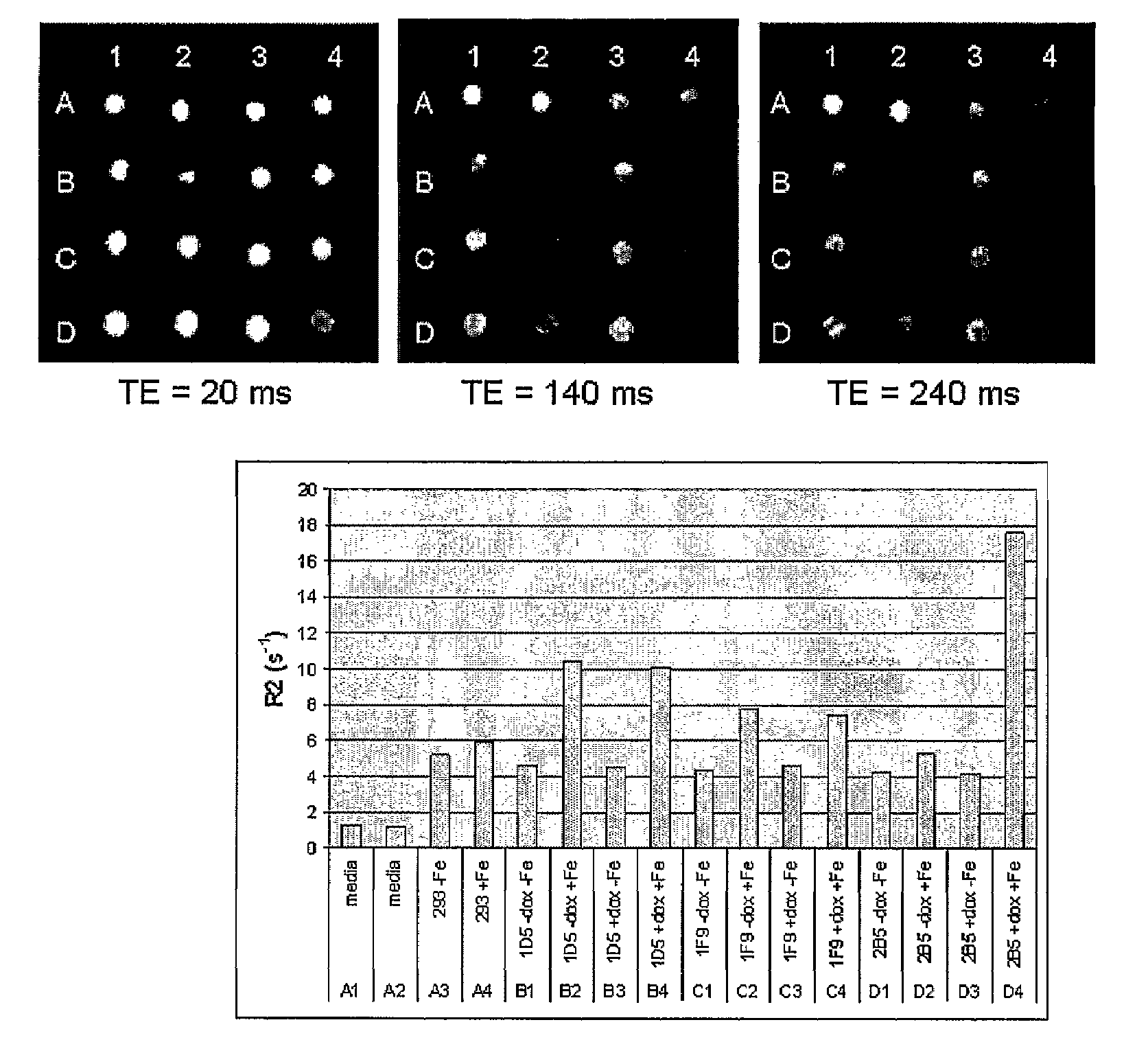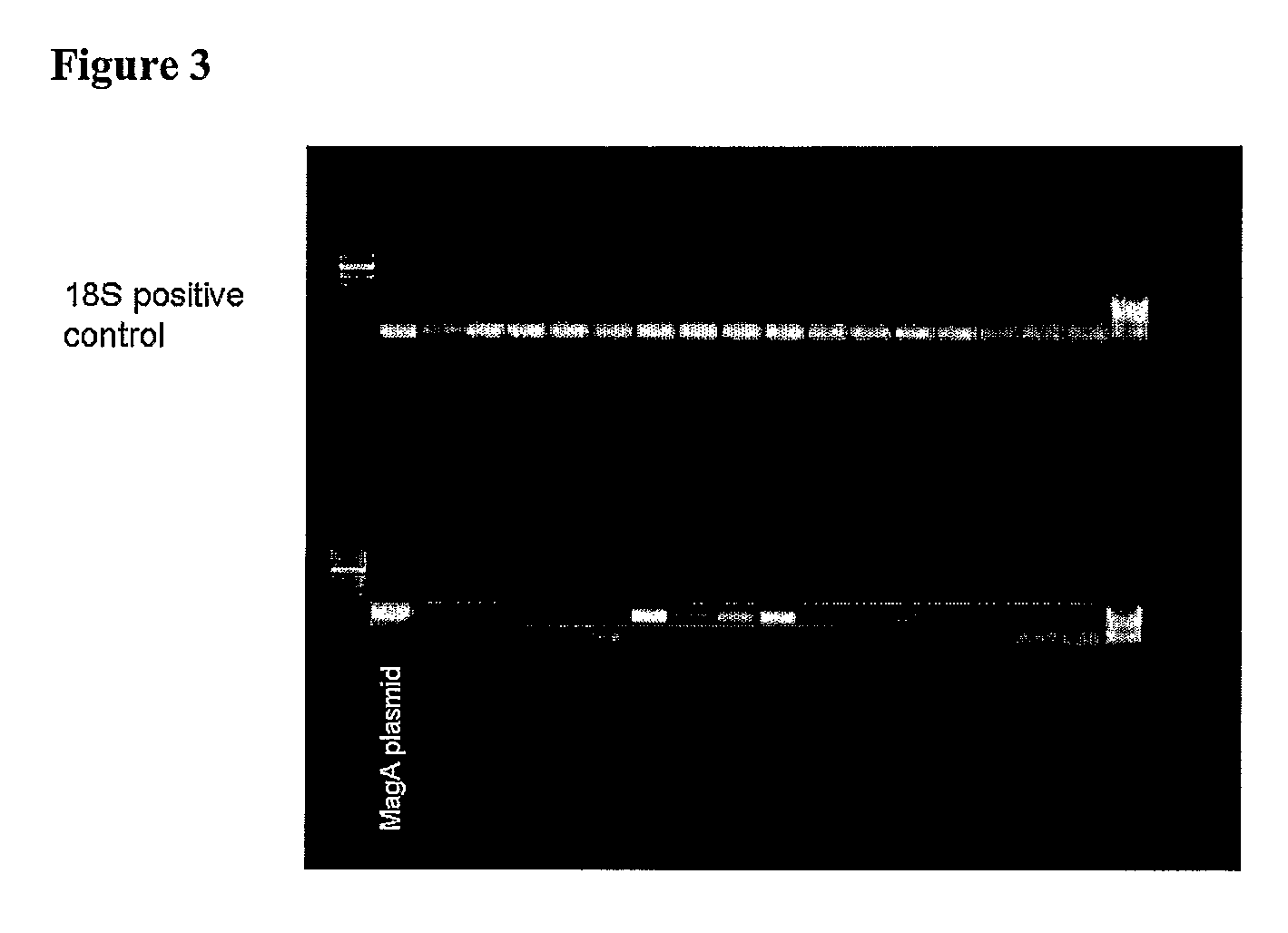Methods and compositions for the production and use of magnetosomes
a technology of magnetosomes and compositions, applied in the field of molecular biology and medical imaging, can solve the problems of lack of widespread biomedical molecular application
- Summary
- Abstract
- Description
- Claims
- Application Information
AI Technical Summary
Problems solved by technology
Method used
Image
Examples
example 1
[0067]MagA is known to be involved in the production of magnetosomes in the species Magnetospirillum magneticum, (Nakamura et al. (1995) J. Biol. Chem., 270(47):28392-28396; Nakamura et al. (1995) J. Biochem. (Tokyo) 118(1):23-7; Bazylinski and Frankel (2004) Nat. Rev. Microbiol., 2(3):217-230). Nakamura and co-workers (Nakamura et al. (1995) J. Biol. Chem., 270(47):28392-28396 and Nakamura et al. (1995) J. Biochem. (Tokyo) 118(1):23-7) found that MagA encodes a protein with significant sequence homology to the cation-efflux proteins, KefC, a K+-translocating protein in Escherichia coli, and NapA, a putative Na+ / H+ antiporter from Enterococcus hirae. The MagA protein is present in both the cytoplasmic and magnetosome membranes of M. magneticum strain AMB-1. MagA was expressed in E. coli and inverted membrane vesicles prepared from these cells were shown to transport Fe(II) in an energy-dependent manner, leading to accumulation of Fe(II) in the vesicle, which indicates that MagA func...
example 2
[0073]In this example, cell lines producing magnetosomes were created. As described below, these magnetosomes could be seen by electron micrography and they affected the MR signal as expected. A major advantage of these methods is that the magnetosome production can continue, even after the cells divide, since the genes have been incorporated into the cellular DNA. In this way, long term identification of cells can be made, even after many cell divisions. Long-term studies can be conducted since the magnetosomes can be regenerated and MR imaging itself is non-invasive and does not destroy the sample being imaged. Furthermore, by developing a controllable system, long-term studies can be conducted in which cells are allowed to grow, migrate, divide and develop over a period of time in the absence of magnetosomes. This minimizes the chances of the magnetosomes to interfere with normal cellular processes. Expression of magnetosomes can then be induced and magnetosomes allowed to form, ...
PUM
| Property | Measurement | Unit |
|---|---|---|
| Fraction | aaaaa | aaaaa |
| Fraction | aaaaa | aaaaa |
| Fraction | aaaaa | aaaaa |
Abstract
Description
Claims
Application Information
 Login to View More
Login to View More - R&D
- Intellectual Property
- Life Sciences
- Materials
- Tech Scout
- Unparalleled Data Quality
- Higher Quality Content
- 60% Fewer Hallucinations
Browse by: Latest US Patents, China's latest patents, Technical Efficacy Thesaurus, Application Domain, Technology Topic, Popular Technical Reports.
© 2025 PatSnap. All rights reserved.Legal|Privacy policy|Modern Slavery Act Transparency Statement|Sitemap|About US| Contact US: help@patsnap.com



